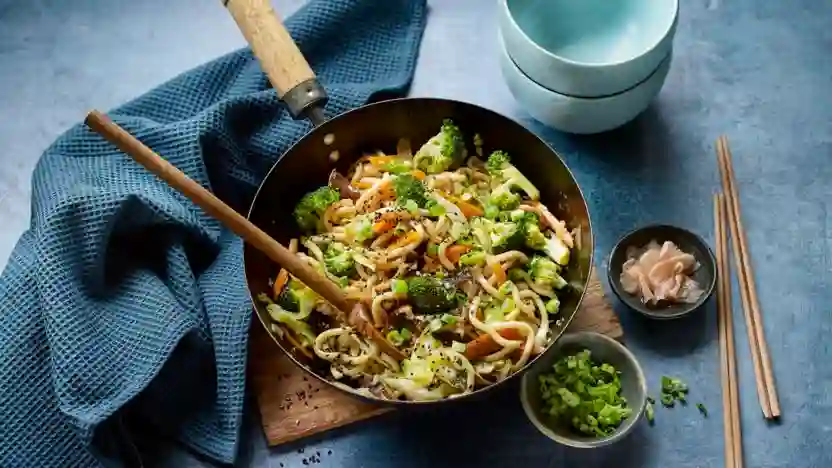Wine pairing is an art that enhances the dining experience, adding depth and dimension to each dish. When it comes to healthy meals, selecting the right wine can elevate simple, nutritious ingredients, turning a regular dinner into a gourmet experience. This article delves into the nuances of pairing wine with healthy meals, offering insights to both enthusiasts and novices in the culinary world.
Understanding Wine and Food Pairing Basics
The key to a successful wine pairing lies in understanding the interplay between the flavors of the food and the characteristics of the wine. The goal is to achieve a balance where neither the wine nor the food overpowers the other, but rather, they complement and enhance each other.
- Balance in Flavor Intensity: Pair light-bodied wines with lighter food and fuller-bodied wines with heartier, more flavorful dishes. This ensures that the wine and food match each other in intensity and neither is overshadowed.
- Acidity and Fat: Acidic wines can cut through the richness of fatty foods, creating a balanced taste sensation. This is why a crisp white wine pairs beautifully with a creamy sauce or a rich fish like salmon.
- Tannins and Protein: Tannic wines, like a bold red, pair well with protein-rich foods. The tannins bind to the proteins and fats, softening the wine’s astringency and enhancing the flavors of the food.
Pairing Wine with Healthy Starters
Healthy starters like salads, soups, or light seafood dishes are best paired with wines that complement their freshness and lightness.
- Salads and Sparkling Wines: A crisp salad with a vinaigrette dressing pairs wonderfully with sparkling wines. The bubbles and acidity of a Prosecco or Champagne can cleanse the palate and contrast nicely with the acidity of the dressing.
- Light Soups and Dry White Wines: For vegetable-based soups, a dry white wine like Sauvignon Blanc or Pinot Grigio works well. These wines complement the freshness of the vegetables without overwhelming their delicate flavors.
Selecting Wines for Main Courses
The main course is often where the wine pairing becomes more complex, as the flavors and cooking methods vary significantly.
- Fish and White Wines: Lightly cooked fish dishes are well-complemented by light white wines like Chardonnay or Riesling. For fish with richer sauces, opt for a full-bodied white or even a light red like Pinot Noir.
- Chicken and Versatile Wines: Chicken, being a versatile protein, pairs well with a variety of wines. For grilled or roasted chicken, consider a medium-bodied red like a Merlot. If the chicken is prepared with a light sauce or herbs, a Chardonnay or Sauvignon Blanc can be a great match.
- Vegetarian Dishes and Various Pairings: Vegetarian dishes can vary greatly in flavor and texture. Earthy vegetables like mushrooms pair well with Pinot Noir, while dishes with legumes and beans can be complemented by a light red or a robust white wine.
Pairing with Spicy and Flavorful Dishes
Spicy and highly flavorful dishes require careful wine pairing to ensure the wine’s flavor is not lost.
- Spicy Foods and Off-Dry Wines: For spicy cuisines like Indian or Thai, an off-dry Riesling or Gewürztraminer can provide a sweet contrast to the heat and spice of the food.
- Herb-Heavy Dishes and Aromatic Wines: Dishes with a heavy presence of herbs can be paired with aromatic wines like Sauvignon Blanc, which often carry herbal notes that can complement the dish.
Wine with Healthy Desserts
Even in the realm of healthy desserts, wine can be a delightful addition.
- Fruit Desserts and Sweet Wines: Light, fruit-based desserts pair well with sweet wines like Moscato or a dessert Riesling. The sweetness in the wine complements the natural sugars in the fruit.
- Dark Chocolate and Red Wine: For desserts featuring dark chocolate, consider a full-bodied red wine like a Cabernet Sauvignon or a Zinfandel. The richness of the chocolate pairs harmoniously with the robust flavors of these wines.
Considering Dietary Restrictions
When planning a healthy meal with wine pairings, it’s important to consider any dietary restrictions or preferences. For those who prefer alcohol-free options, there are numerous non-alcoholic wines that still provide the complexity and depth needed for pairing with sophisticated dishes.
Seasonal and Local Pairings
Emphasizing seasonal and local food and wine can enhance the dining experience. Pairing a locally sourced meal with a wine from the same region not only supports local producers but can also provide a unique and harmonious pairing, as the food and wine often share inherent characteristics due to the region’s climate and soil.
Experimentation is Key
The rules of wine pairing are not set in stone. Experimenting with different combinations can lead to delightful discoveries. Don’t be afraid to try unconventional pairings; sometimes, the most unexpected combinations can be the most rewarding.
Educating Your Palate
Understanding your own palate is crucial in wine pairing. Spend time tasting different wines and learning how they interact with various flavors. This knowledge not only makes pairing easier but also enhances your overall enjoyment of wine and food.
The Role of Preparation Methods
The way a dish is prepared can significantly influence the wine pairing. Grilled dishes might pair better with bolder wines due to the smoky flavors, while steamed or raw dishes might require a more delicate wine. Consider the dominant flavors and preparation methods when selecting your wine.
Wine Temperature and Serving
Serving wine at the correct temperature is vital. White wines are typically served chilled, enhancing their crispness, while reds are best served slightly below room temperature, allowing their flavors to fully develop. Proper glassware also plays a role in the tasting experience.
Engaging the Senses
Pairing wine with food is about engaging all the senses. Pay attention to the aroma, texture, and flavor of both the wine and the food. A successful pairing will elevate the sensory experience, making the meal more enjoyable and memorable.
Healthy Choices in Wine Selection
When focusing on healthy dining, consider the wine’s attributes as well. Opt for wines with lower alcohol content and those produced organically or with minimal additives. This approach aligns with the ethos of healthy eating and sustainability.
Sharing the Experience
One of the joys of wine pairing is sharing the experience with others. Hosting a dinner where each course is paired with a different wine can be a delightful way to explore and enjoy food and wine with friends and family.
Conclusion
Pairing wine with healthy meals is an exciting journey that enhances the dining experience. It allows the flavors of the meal to shine and can transform a simple dish into a gourmet treat. By understanding the basics of pairing, considering dietary needs, and being open to experimentation, you can create memorable meals that delight the senses. Whether you’re a seasoned wine connoisseur or a curious beginner, the world of wine pairing offers endless possibilities to explore and enjoy.














